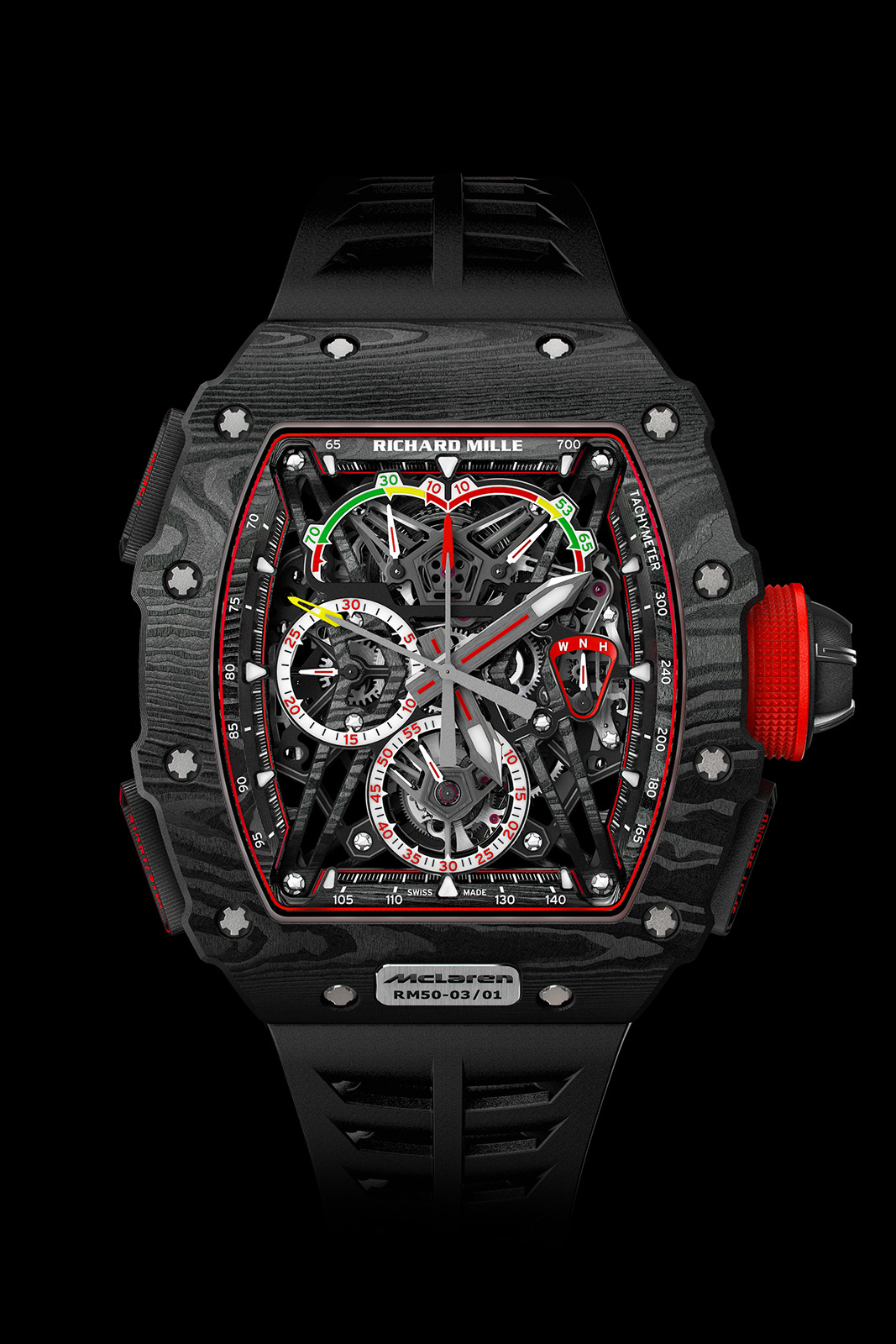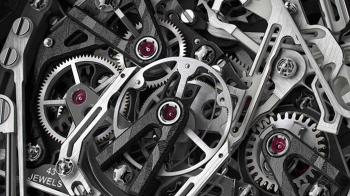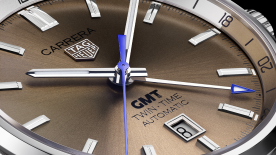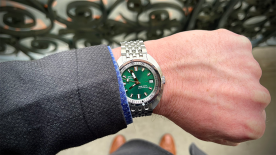Carbon fibre has been used as a material for watch cases for a number of years, facilitating the trends for all-black and stealth-look watches. Three new watches launched at the SIHH this year take things a step further, using carbon fibre composites inside the movement to replace more traditional alloys. Each does so in a different way, once again highlighting the creativity within the watch industry.
Roger Dubuis Excalibur Spider Carbon
The use of carbon fibre as a case material is part of Roger Dubuis’ strategy of diversification away from the use of precious metals. Whereas around 80% of the brand’s production was in precious metal just two years ago, Roger Dubuis CEO Jean-Marc Pontroué told WorldTempus that the majority of models produced this year will have non-precious metal cases. In the case of the Roger Dubuis Excalibur Spider Carbon, the extra lightness and robustness offered by carbon fibre composites has also been used for the main plate, bridges and even the upper part of the tourbillon cage. The result is a structure on the movement that matches that on the case and is complemented by a honeycomb on the dial that resembles the radiator grilles on performance cars. The use of carbon fibre composites inside the movement poses an additional challenge to Roger Dubuis, however, since the brand certifies the overwhelming majority of its watches with the Geneva Hallmark. This imposes certain conditions on the decoration of movement components, including hand finishing. Carbon fibre composites are difficult enough to work by machine, so their hand finishing adds an extra layer of complexity. The Roger Dubuis Excalibur Spider Carbon is the most limited of the three models discussed here, with just 28 pieces available. But even at a cool 180,000 Swiss francs it is by no means the most expensive of the three watches we are presenting here.
Richard Mille RM 50-03 McLaren F1
The first product born of the new relationship between Richard Mille and McLaren, the RM 50-03 is fitted with a movement that weighs just 7 grammes. The baseplate and some of the bridges are made from grade 5 titanium, while other bridges (some of the split-seconds chronograph bridges, as well as the barrel bridge and the tourbillon bridge) are made from CarbonTPTTM. The same material is used in a carriage that supports the entire calibre and is attached directly to the caseband.
This innovative movement construction is, however, trumped by the watch case in the brand-new GraphTPTTMmaterial, which is the result of joint work between the University of Manchester, McLaren Applied Technologies and North Thin Ply Technology (NTPT®). This new material is an evolution of the Carbon TPTTM already used by Richard Mille, since the 600 layers, each just 30 microns thick, that make up the composite have been impregnated with a resin containing graphene. The result is a split-seconds chronograph tourbillon that weighs less than 40 grammes (including the strap), making it the lightest chronograph ever made. The price of the RM 50-03 McLaren F1 is, however, inversely proportional to its weight. Richard Mille will be making 75 of these watches, each costing around a million euros – just half a million less than the McLaren P1 hypercar, whose production run of 375 sold out easily. 
Panerai LAB-ID
Watch aficionados may recall the Cartier IDTWO watch, presented in 2012, which was the first watch with a movement that did not need any lubrication. There is a definite similarity in name and concept with the new Panerai LAB-ID, but the important difference is that, while Cartier’s watch was just a concept, Panerai’s is a limited-edition production model that is guaranteed for… 50 years!
In the PAM700 (or to give the watch its full name, the Luminor 1950 CarbotechTM 3 Days 49mm), it is the properties of carbon, rather than the material itself, that are exploited within the movement to completely eradicate the need for lubrication. This major accomplishment relies on the use of a DLC (diamond-like carbon) coating on the silicon escapement components, the mainspring barrels and the jewels. In fact, there are just just four jewels on the movement, since the high percentage of carbon in the new material used for the mainplate and bridges (a low-friction composite of tantalum-based ceramic) helps to minimize friction from pivots, making lubrication unnecessary. The standard version of the same P.3001 calibre has no fewer than 60 different points of lubrication.
Panerai marries this ground-breaking technology with its proprietary CarbotechTM case and a deep-black dial that has a coating of carbon nanotubes. Blue SuperLuminova indications and blue stitching on the strap add a colourful contrast to the watch. This technological marvel comes as a limited edition of 50 and the boast of a 50-year warranty (unsurprisingly linked to small print in the warranty booklet) for a price tag of 50,000 euros which, when looked at over the long term, seems an attractive investment.










